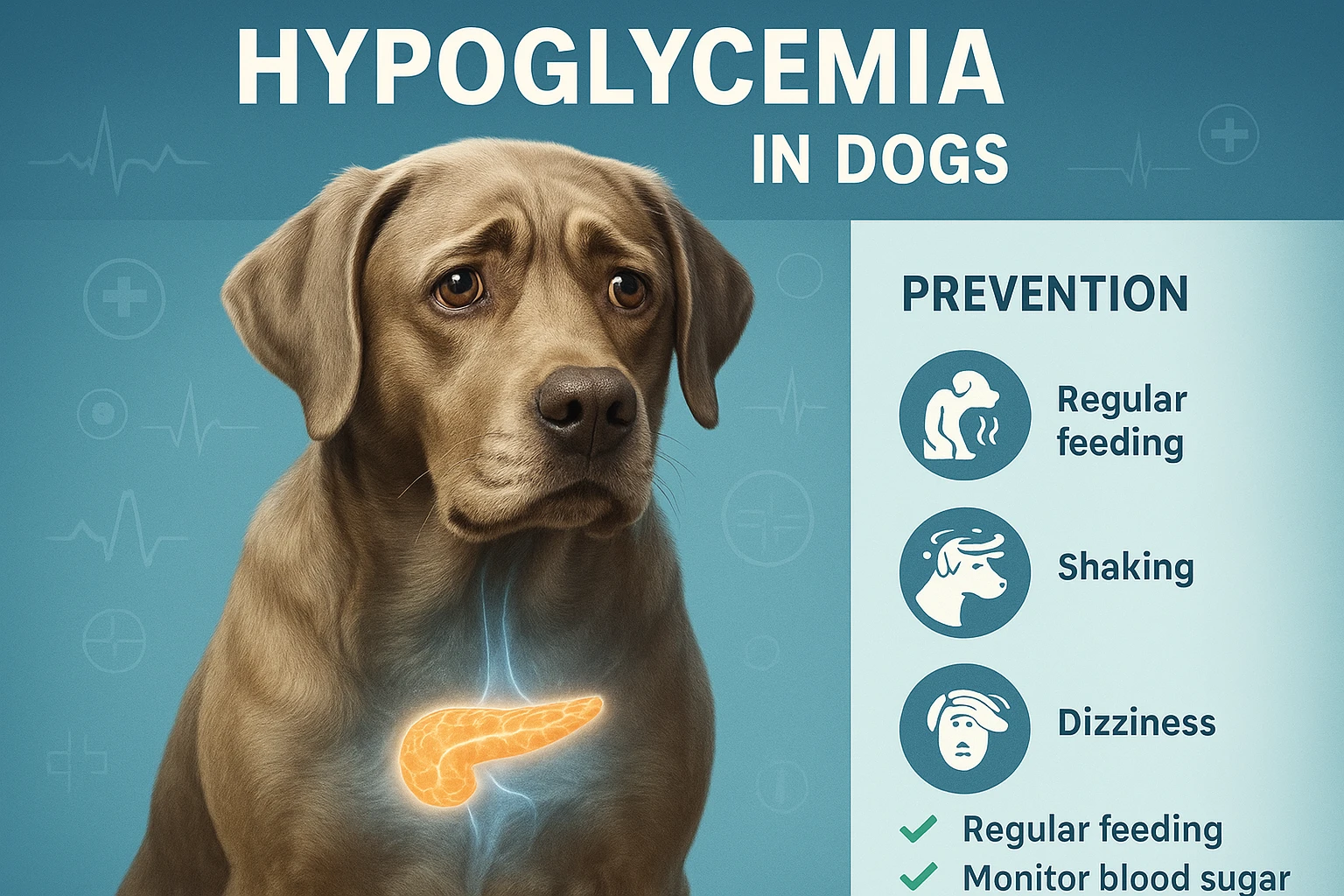Understanding Canine Hypoglycemia: Symptoms and Prevention
Introduction
Canine hypoglycemia is like the sneaky thief in the night—silent, swift, yet potentially dangerous if left unchecked. It affects many dogs, particularly those in emergency situations. Understanding this condition, from symptoms to prevention, is crucial in safeguarding your furry friend’s health. Let’s dive into the world of blood sugar levels and see how you can keep your pet’s tail wagging with vitality!
Key Takeaways
- Understanding symptoms is crucial for early intervention against canine hypoglycemia.
- Regular veterinary check-ups and continuous glucose monitoring are crucial.
- Prevention is about balancing diet and lifestyle.
- Emergency preparedness can save lives.
Table of Contents
Understanding Canine Hypoglycemia
The science hat is on, folks! Canine hypoglycemia occurs when blood sugar levels drop below normal. It’s especially prevalent in emergency settings, where approximately 9% of dogs are affected. Why does it matter? Low glucose can lead to lethargy, seizures, or worse. Addressing this condition swiftly can make a world of difference for your pup.
- The link between hypoglycemia and emergency care underscores the importance of early detection.
- Small breeds and puppies are more susceptible to rapid blood sugar dips.
- Underlying conditions like insulin shock or liver disease often play a role.
Symptoms and Diagnosis
You don’t need a PhD to recognize signs of hypoglycemia. This condition manifests with symptoms like seizures, weakness, or even collapse. Flash glucose monitoring systems are making diagnosing easier and more accessible. Catching these symptoms early is imperative for the health of your furry friend.
- Studies from Dr. Ford highlight advances in glucose monitoring for early detection.
- Look out for a comically tipsy gait or lethargy—it’s not just your pup being lazy!
- Regular check-ups can help nip issues in the bud before they escalate.
Prevention Strategies
Prevention, my culinary comrades, is like adding just the right amount of salt to your stew; too little or too much, and you’ve got a disaster. For canine hypoglycemia, the perfect recipe includes regular veterinary check-ups and a balanced diet. Ensuring consistency with meals can help maintain stable blood sugar levels.
- Regular meals stave off those sad puppy eyes—and potential sugar dips.
- Flashback to our research: Regular feeding and vet visits are a win-win!
- Watch out for hidden threats like xylitol in treats; it’s a silent sugar killer.
FAQs
-
What causes hypoglycemia in dogs?
Common culprits include excess insulin or xylitol poisoning. Diseases like diabetes can also trigger low blood sugar levels.
-
How is canine hypoglycemia managed?
Care involves balanced meals, reduced stress, and emergency preparedness. Regular veterinary visits are essential.
-
Are some breeds more susceptible?
Yes, smaller breeds and puppies can experience hypoglycemia more frequently due to faster metabolisms.
Conclusion
So, there we have it—our deep dive into the sugar lows of canine hypoglycemia. Whether you’re all about flash glucose monitors or old-school meal consistency, the key is awareness and early intervention. Remember, when in doubt, trust in your vet’s wisdom. At the end of the day, a happy tail is the best reward. Now, go give your little furball some love and keep them wagging with contentment.


Leave a Reply